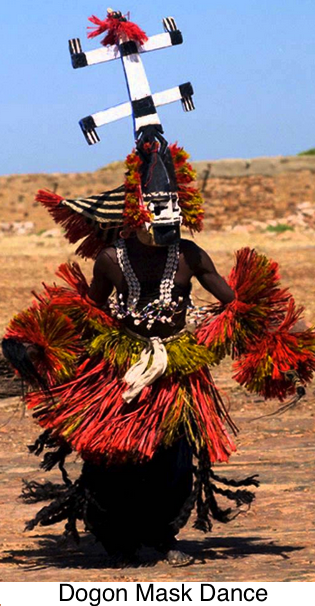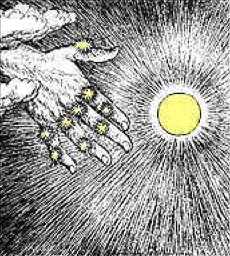Dance, music, handclapping, singing, costuming, the presence of an expectant and participating audience, a ritual setting at an appropriate place and time—all these are ideally suited to produce both induction of dissociation and the therapeutic results of the ritual. Expectation and suggestion are obviously of great importance in bringing these about. The music, with its increasing frequency and intensity, facilitates rhythmical movement and itself has a clear psychological effect: it may help to release the dancer of part of his responsibility for his movements and actions. But it may have a physiological effect on the brain as well, helping to induce dissociation. The dance itself will contribute to an alteration of breathing patterns; it may bring about hyperventilation and—if prolonged—partial exhaustion, both of which again facilitate dissociation. Another significant factor, however, is to be found in the frequent whirling and turning, of circular and rotational movements.
 These tend to affect the sense of balance and equilibrium, thus leading to dizziness. Disturbances of balance are likely to be experienced, involving a loss of control over the body and thus over the self. They may indicate the impending loss of consciousness. If, furthermore, a disturbance in the sense of balance is believed to be a preliminary to possession, to being “mounted” by a spirit as it is so frequently phrased, this in itself will contribute to the likelihood of the occurrence of trance.
These tend to affect the sense of balance and equilibrium, thus leading to dizziness. Disturbances of balance are likely to be experienced, involving a loss of control over the body and thus over the self. They may indicate the impending loss of consciousness. If, furthermore, a disturbance in the sense of balance is believed to be a preliminary to possession, to being “mounted” by a spirit as it is so frequently phrased, this in itself will contribute to the likelihood of the occurrence of trance.
Thus there are many types of ritualized, patterned forms of trance; there are many types of beliefs in possession by spirits. In fact, several such types of trance and spirit-possession belief may co-exist in the same society or in different segments of the same society. When trance is interpreted as due to spirit possession and when spirit possession finds its expression in states of trance, then we are also likely to find a linkage between trance and dance.
Non-possession trance more rarely uses the dance as its vehicle of expression and it is least likely to do so when hallucinogenic drugs are employed. Where spirit possession trance occurs, the trancer impersonates the spirit, but he is unlikely to utilize masks among his accessories.
Ritualized, formalized dissociational states are found worldwide, are given a great variety of cultural interpretations and are embedded into many different institutions, customs, traditions and practices, most of which are religious in nature.
The very wide distribution of these states among the peoples of the world would suggest that they are very ancient. We cannot trace their origins in the nearly two million years of human evolutionary history and to speculate about these origins would be rather pointless. . . .
However, if we are more modest in our aims and look back to the span of five thousand years of recorded history, we meet many ancient examples of ecstatic dance involving experiences of dissociation and, often quite explicitly, a statement of belief in supernatural possession or union with the Divine. Our own Western tradition has its deepest roots in the Mediterranean world of Jew and Greek, and we find what we are looking for in both of these traditions. For example, we are told in the Bible (I Samuel 10) that Saul traveled with a company of ecstatic prophets. “And David danced before the Lord with all his might.” (II Samuel 6).
He leaped and danced ecstatically before the Ark while he and his men played on such instruments as harps and psaltries, timbrels, cornets and cymbals, as the King James Version lists them. Ecstatic and dissociated behavior, visions and voices, appear throughout the Bible, both in the Old and New Testaments.



